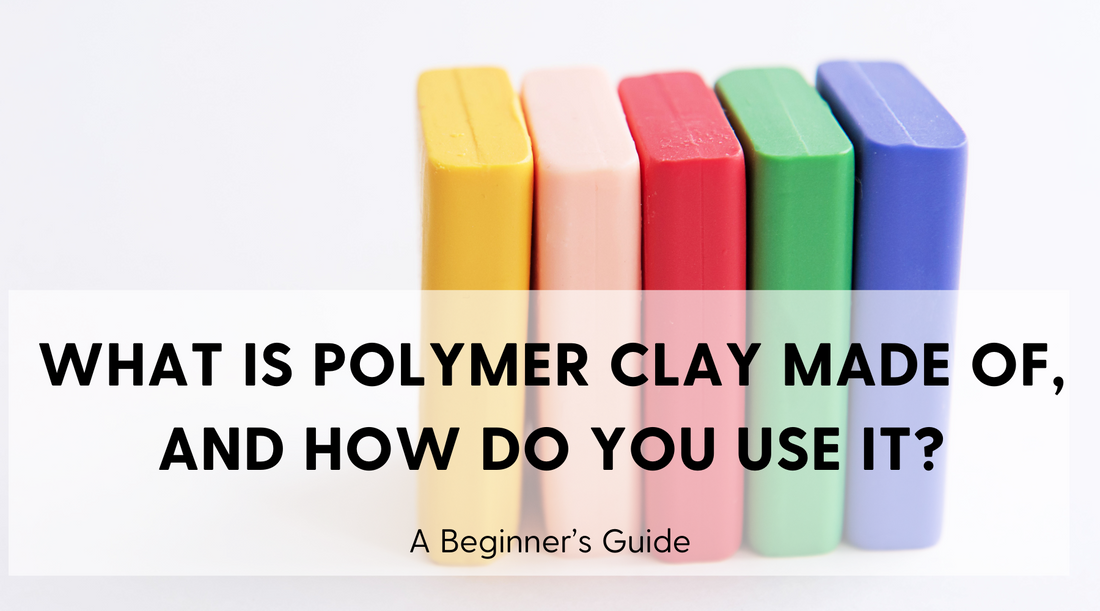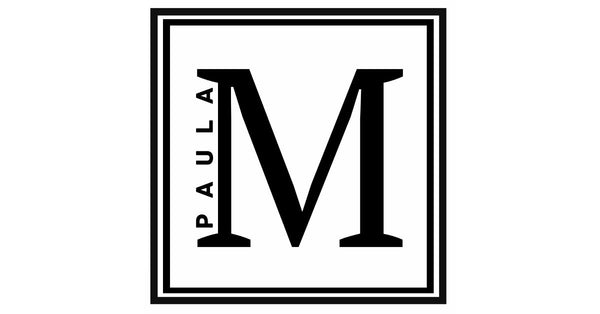
What Is Polymer Clay Made Of, and How Do You Use It? A Beginner's Guide
Share
Polymer clay is a popular modeling material used by professional artists and crafters alike. Also known as “poly clay”, this medium offers a wide range of versatile uses for projects. Whether you are using polymer clay in jewelry making, for sculpting or making home decor, it has numerous uses that makes this material so interesting. Understanding what polymer clay is made of is important to know so you know how to work with this material effectively.
But what is polymer clay made of? In this article we explore what polymer clay is and take a look at different brands that are on the market and safety considerations for working with clay.
The basics of polymer clay
What is polymer clay?
To answer the question “what is polymer clay made of?” We first need to look at the ingredients. Polymer clay mainly consists of polyvinyl chloride widely known as PVC to give the material structure, and then plasticizers are added to make it pliable and easy to work with.
What is PVC?
PVC, or polyvinyl chloride, as it known is the primary ingredient in polymer clay giving it stability. In its raw state, PVC is rigid that’s why it need plasticizers to soften it to make it pliable. It cures at a low temperature (265-275 degrees Fahrenheit) making it ideal to use as modeling clay.

What are plasticizers?
Plasticizers are additives commonly used in polymer clay to make the clay more flexible in order to mold and move the clay for sculpting. There are several different types of plasticizers including phthalates, synthetic phthalates and non-phthalates. Different plasticizers used create different flexibility and durability of the clay. With today’s safety standards in place, most clay manufacturers have shifted to using non-phthalate plasticisers.
Additives and color
Polymer clay also contains stabilizers to maintain its pliability, as well as binders and fillers to enhance durability and keep the clay workable.
For the variety of colored clays available on the market, color pigments are added to the clay to create vibrant colors, soft hues, shimmers or sparkle.
Is it safe to use polymer clay?
When crafting with any synthetic material it's always important to follow safety directions provided by the manufacturer. Polymer clay is generally safe to use by adults and supervised children when following the directions for its intended use.
Manufacturers of polymer clay in the USA carry out extensive tests for safety to meet the regulation standards of the Consumer Product Safety Improvement Act (CPSIA).
Plasticizers were problematic in the past because they contained phthalates. Today safer synthetic versions of phthalates are used along with non-phthalate alternatives making polymer clay safer to use.
Handling unbaked polymer clay
Always follow the directions on the package for safe handling. Use in a well ventilated area and wash your hands after handling unbaked clay. Store unbaked clay at room temperature wrapped in its outer package and away from other PVC plastics or plastic items.
Baking Polymer clay
When baking poly clay it is recommended to use an oven thermometer and bake at the temperature and time stated on the back of the package. Generally polymer clay does not release harmful fumes whilst baking at low temperatures. Overheating can release harmful fumes. It is recommended to bake polymer clay in a well ventilated area using a dedicated oven with a thermometer, such as a toaster oven, to avoid contamination with food when using your regular kitchen oven.
Why use polymer clay rather than regular clay?
It really comes down to the versatility and simplicity of using polymer clay over regular clay. You don’t need too many tools to get started as a hobbyist with polymer clay. With regular clay, you will need a kiln for firing the clay which is a specialized and very expensive piece of equipment, or you will need to rent time to use a local shared kiln.
Ease of Use
Poly clay has an extended shelf life and the great thing is it does not dry when exposed to air unlike regular clay in which you have to add water to work with the clay. You can work on a project, leave it on your work surface and come back to it the next day and it will be just as you left it.
Bake Time
Also the baking time is short when using polymer clay. Most bake times are between 30 mins to 1 hr depending on the thickness of the project. Regular clay takes around 8-10 hrs to and then similar time to complete a glaze finish.
polymer clay fairy door ornaments
Fine Details
By using polymer clay you are able to create fine details using handheld tools which makes it a great choice for more intricately detailed sculptures or jewelry making.
Colors
There is a vast choice of colors you can choose from when using polymer clay. The great thing is if you can't find a specific color you want you can combine colors to make exactly the color or hue you are looking for. You can also make color gradient blends called “skinner blends”.
Durability
Cured polymer clay projects are durable and strong which make it a great medium to use for jewelry making, hair accessories, decorative home decor, sculptures and figurines.
Types of Polymer Clay
Now you understand what polymer clay is made of, next is to select the right polymer clay type for your project. There are several popular brands of polymer clay and they all have different levels of firmness and textures.
When starting out as a beginner, it’s a good idea to try a couple of different brands of clay and select a few firmness options to see which you prefer working with.
Here are some popular brands to consider:
- Sculpey
- Fimo
- Cernit
- Kato
The general rule of thumb when selecting the right polymer clay for your project is to choose firm or medium firm clay for fine detail work and soft for simple less detailed projects, but it is good to experiment to see what works best for your sculpting style.
Speciality Polymer Clay
There are also special types of polymer clay available that can add some unique finishes to your project.
- translucent clay- which can add a transparent glass-like effect
- glow-in-the dark
- glitter clays
- textured leather or stone look
- pearlescent
- metallics
- Liquid clay - is great for intricate detail molds and using as a clay glue.
Tools you will need to get started
To get started using polymer clay you will need a few basic tools. You can find these at your local craft store or Art shop or on Amazon.com Here’s what you will need:
A set of clay sculpting tools including ball end tools for smoothing, sculpting tools that are wood or metal, and silicone tipped tools for smoothing and adding detail.
A ceramic tile for working on - this gives a smooth surface when rolling out your clay
A tissue blade or a knife blade - for cutting the clay
An acrylic rolling pin
Dedicated toaster oven - (preferable)
An oven thermometer
Shaped cutters or paper stencils - (optional). You can use Canva (free account) to create shapes. Print and cut them out and you will have shapes you can place onto your clay to use as stencils.
Optional items
Color pigments (also known as mica powders) for adding color to the surface of the raw clay.
Embellishments: You can include many items to embellish your clay. Be sure that they are items that can be baked at the same temperature as your clay. Examples would be, crystals, gemstones, glass, metal items, wood to name a few.
Sealant - If you are using pigment colors or other finishes on your clay you will need to use a sealant for a long lasting finish. You can use polyurethane such as DecoArt or Varathane, glazes, resin or a finishing wax such as Renaissance wax. Finishes are applied after your project is cured.
Sand paper 400-1000 grit sandpaper. The higher the number the finer the grit.
Stamps or texture mats to create textured patterns on the surface of the clay.


Some examples of what you can make with polymer clay
What is conditioning clay and why is it important?
It is important to condition your clay before use. Conditioning clay means that you need to knead the clay to create a smooth pliable texture before beginning to sculpt. By doing this, prior to using your clay, it will be easier to work with and will prevent cracking when curing in the oven.
You can do this by hand by rolling and warming the clay in your hands and then rolling onto your tile surface repeatedly until smooth, or by using a pasta machine that is dedicated for polymer clay only. By using the pasta machine, the clay is rolled out several times by folding and rolling until all bubbles are removed and the clay is smooth, soft and flexible.
Curing Polymer Clay
In order for your project to be durable and long lasting you will need to cure (bake) your item in an oven at a consistent temperature for a determined length of time.
As mentioned previously in this article it is best to have a dedicated oven for baking polymer clay. A good option is a toaster oven. Using a toaster oven along with an oven thermometer you are able to heat up the oven fast and regulate the temperature.
What temperature should I bake my clay and for how long?
When you are ready to bake your clay project always refer to the manufacturer packaging to see what temperature is required. The majority of brands have different baking temperatures for their specific clay products.
The baking time will depend on the thickness of your clay piece and the recommended baking duration. Keep an eye on your thermometer throughout the baking process to avoid any heat spikes that could cause your clay project to burn. This can happen if you open the oven door, so keep it closed once your clay piece is inside to cure properly.
Once baked, allow your project to cool before sanding or applying any finishes.

Decorative Hair Stick Collection
Are you ready to use polymer clay?
In this article we learned what polymer clay is made of. It contains polyvinyl chloride (PVC) along with plasticizers, additives and color pigments to create a flexible modeling clay that holds fine details and is easy to work with for beginners and professionals alike.
That it is safe to use whilst handling in the raw form and also when it is cured. It is a durable material ideal for uses such as jewelry, home decor and sculptures and figurines.
Now you know what polymer clay is made of, and its uses, I hope you give it a try for your own projects and see how versatile and fun this modeling clay is.
If you have any questions about polymer clay and its uses, leave a comment below and I’ll be happy to answer them. Feel free to explore how I use polymer clay in my art jewelry, hair barrettes and hair sticks, crowns, wands and more! Visit my website at paulamcnulty.com







